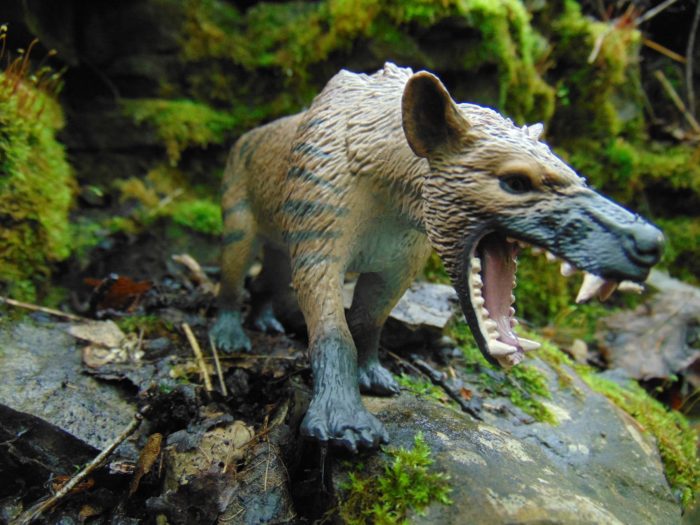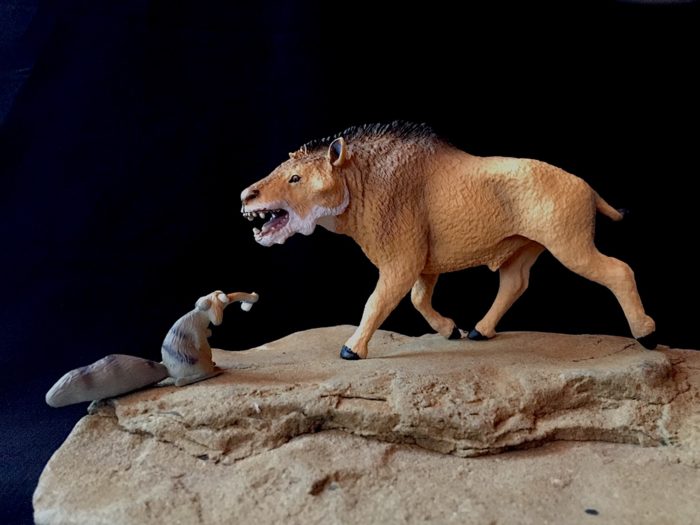For over 25 million years Hyaenodons hunted across Africa, Asia, North America and Europe. They were formidable predators that had oversized jaws. When hunting they would have probably ambush their prey with a quick rush, grab on to the head or neck with that impressive maw, and secure the kill.
Age: Oligocene
Review: Baluchitherium AKA Paraceratherium (Starlux)
Review: Daeodon (Wild Safari by Safari Ltd.)
Review: Prehistoric Mammal Skulls (Toob by Safari Ltd.)
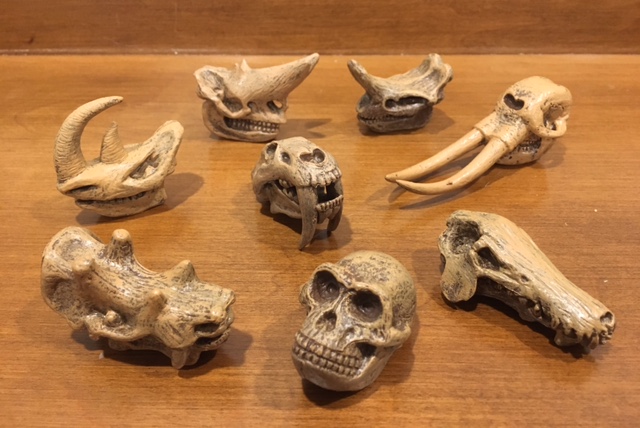
4.7 (9 votes)
Prehistoric skulls, be they those of dinosaurs, pterosaurs, sea monsters, mammals, amphibians, or any other beasts, are always things of beauty and intrigue. Let us take a look at this interesting variety of mammal skulls from Safari Ltd. There are eight in total, all coloured medium brown with a pale brown wash, and all with their names printed on the undersides.
Review: Megachoerus AKA Archaeotherium (Tyco)

4.2 (6 votes)
Review and photos by Archinto, edited by Suspsy
Here we will be taking a look at a classic rendition of the prehistoric mammal Archaeotherium, as perceived by the Tyco company in 1990 for their awesome Dino-Riders toy line. This particular figure was released for the Ice Age sub-theme (under the subgenus Megachoerus), which also featured a motorized woolly mammoth as well as an articulated Smilodon and Megatherium.
Here we will be taking a look at a classic rendition of the prehistoric mammal Archaeotherium, as perceived by the Tyco company in 1990 for their awesome Dino-Riders toy line. This particular figure was released for the Ice Age sub-theme (under the subgenus Megachoerus), which also featured a motorized woolly mammoth as well as an articulated Smilodon and Megatherium.
Review: Monanthesia and Cycadeoidea (CollectA)
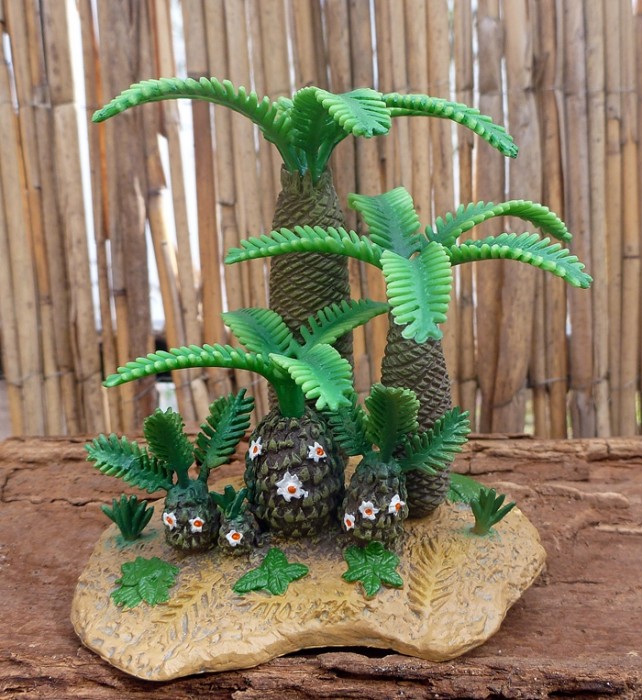
5 (14 votes)
Review and photos by Lanthanotus, edited by Suspsy
Greens, stems, and leaves, but no teeth, no blood, no gore . . . no wonder plants seldom provide more than background for movies or our dinosaur collections. Day of the Triffids (1962) is the classic plant horror film par excellence, where seemingly harmless plants attack and kill humans and charge to take over world domination within days (for those of you that can’t stand classic B-movies or modern semi-quality TV adaptations of them, Splinter may be a more thrilling choice, though the antagonist is !SPOILER ALERT!
Greens, stems, and leaves, but no teeth, no blood, no gore . . . no wonder plants seldom provide more than background for movies or our dinosaur collections. Day of the Triffids (1962) is the classic plant horror film par excellence, where seemingly harmless plants attack and kill humans and charge to take over world domination within days (for those of you that can’t stand classic B-movies or modern semi-quality TV adaptations of them, Splinter may be a more thrilling choice, though the antagonist is !SPOILER ALERT!
Review: Williamsonia (CollectA)

5 (15 votes)
Thought I’d take a stab at reviewing a prehistoric plant for the first time. Let’s take a look at Williamsonia, a member of the order of Bennettitales, or cycadeoids. Bennettitales were an order of seed plants that first arose during the Triassic and then flourished all the way until the end of the Cretaceous.
Review: Entelodon (Mojö Fun)
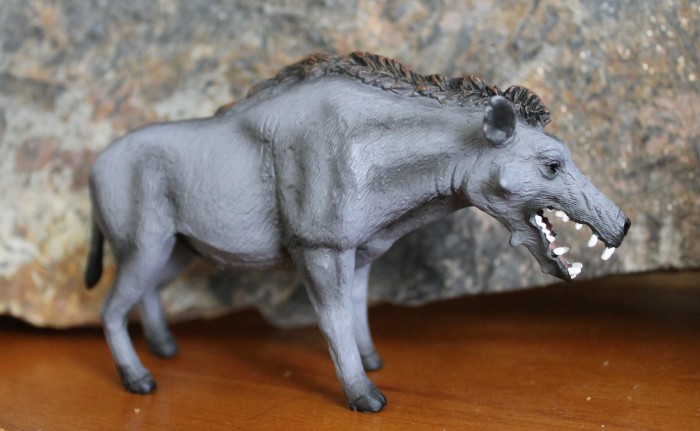
4.8 (6 votes)
Despite their appearance and popular designation as “Hell” or “terminator” pigs the group scientifically knows as the entelodontidae are now thought to have been more closely related to whales and hippopotamuses. Regardless of their taxonomic affinity there is no denying the superficial resemblance the entelodonts have to pigs, and one has to wonder if they had a similar temperament to pigs and hippopotamuses as well.
Review: Prehistoric Landscapes Cycad by Safari Ltd.
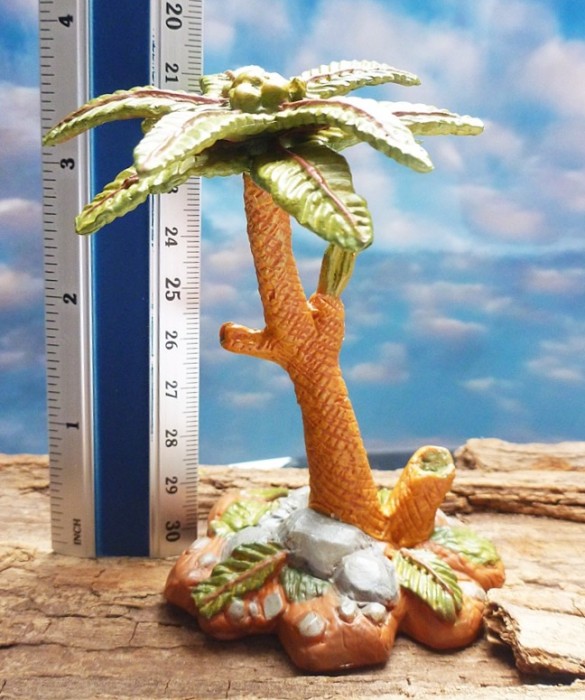
4.9 (11 votes)
Review and photographs by Lanthanotus, edited by Suspsy
Here comes another (unfortunately retired) one of the prehistoric plants produced by Safari Ltd, the other two being reviewed here. I did not include it in the first review as my usual retailer didn’t have it in stock anymore and it took some time to find one for a reasonable price.
Here comes another (unfortunately retired) one of the prehistoric plants produced by Safari Ltd, the other two being reviewed here. I did not include it in the first review as my usual retailer didn’t have it in stock anymore and it took some time to find one for a reasonable price.
Review: Prehistoric Plants (Safari Ltd)
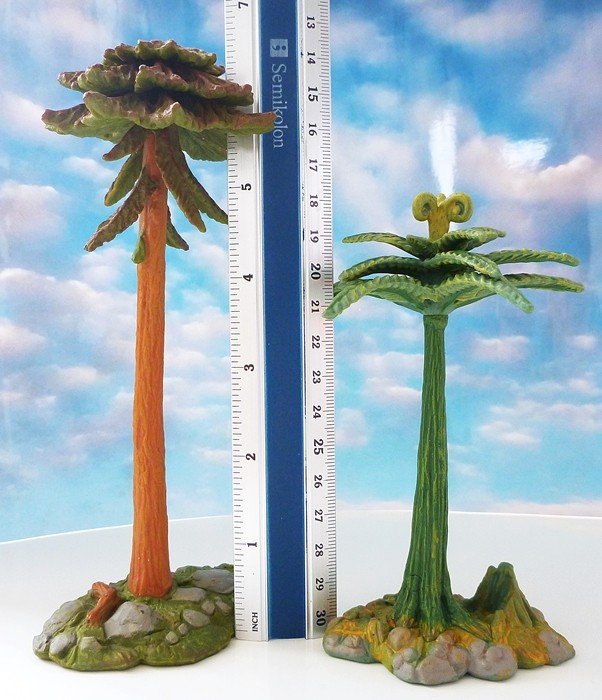
4.9 (10 votes)
Review and photographs by Lanthanotus, edited by Suspsy
Plants and trees may not be a collector’s first choice of models to collect, and not only because there’s so few around. In general, humans feel more attracted to animals than towards plants despite the fact that we could still live well without keeping or even breeding (and feeding on) animals, but not without plants.
Plants and trees may not be a collector’s first choice of models to collect, and not only because there’s so few around. In general, humans feel more attracted to animals than towards plants despite the fact that we could still live well without keeping or even breeding (and feeding on) animals, but not without plants.
Review: Copepteryx (Kaiyodo Dinotales Series 3)
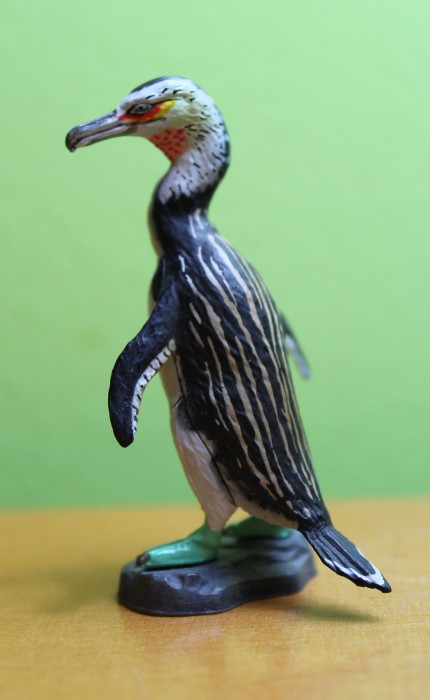
5 (6 votes)
The Japanese toy company Kaiyodo isn’t afraid to tackle the obscure and one of the best examples of this would have to be the Kaiyodo Copepteryx. While other companies make and re-make the same tired old prehistoric favorites here we have Kaiyodo making a very obscure extinct bird that you’ve probably never heard of and who’s name I can never remember (maybe writing this review will fix that).
Review: Arsinoitherium (CollectA)

4.3 (20 votes)
Arsinoitherium was a large herbivorous denizen of swamps and rainforests during the late Eocene and early Oligocene eras. Despite its resemblance to a rhinoceros, it was more closely related to elephants, hyraxes, and sirenians.
Released by CollectA in 2014, this Arsinoitherium toy measures just about 18.5 cm long from the tips of its horns to the end of its tail.

